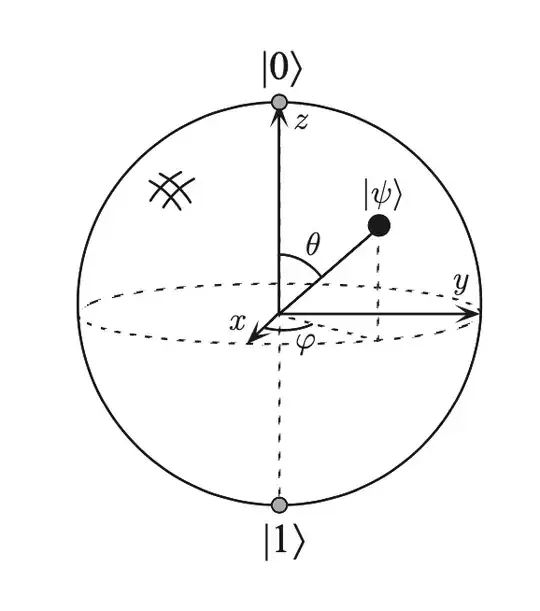An arbitrary 1 qubit pure state can be represented as:
$$|\psi \rangle = \cos(\theta /2) |0\rangle + e^{i\varphi} \sin(\theta/2) |1\rangle$$
where $0 \leq \theta \leq \pi$, $0 \leq \phi < 2 \pi$. The amplitude of the $|0\rangle$ state is $\cos(\theta /2)$ and the amplitude of the $|1\rangle$ state is $e^{i\varphi} \sin(\theta/2)$. The phase of the qubit is $\varphi$ as presented in the question. The length of the vector is equal to $|\cos(\theta /2)|^2 + |e^{i\varphi}\sin(\theta /2)|^2 = 1$ (the sum of the probabilities of all measurement outcomes must equal 1). Thus, all points of the imaginary sphere (Bloch sphere) with radius 1 can be regarded as different quantum states.
$\theta$ and $\varphi$ are both angles and they need planes for defining them. Thus, we need all X, Y, Z axis. $\varphi$ is the angle defined in the XY plane and $\theta$ is the angle defined in the plane that includes Z axis and the vector that represents the quantum state in the Bloch sphere.
